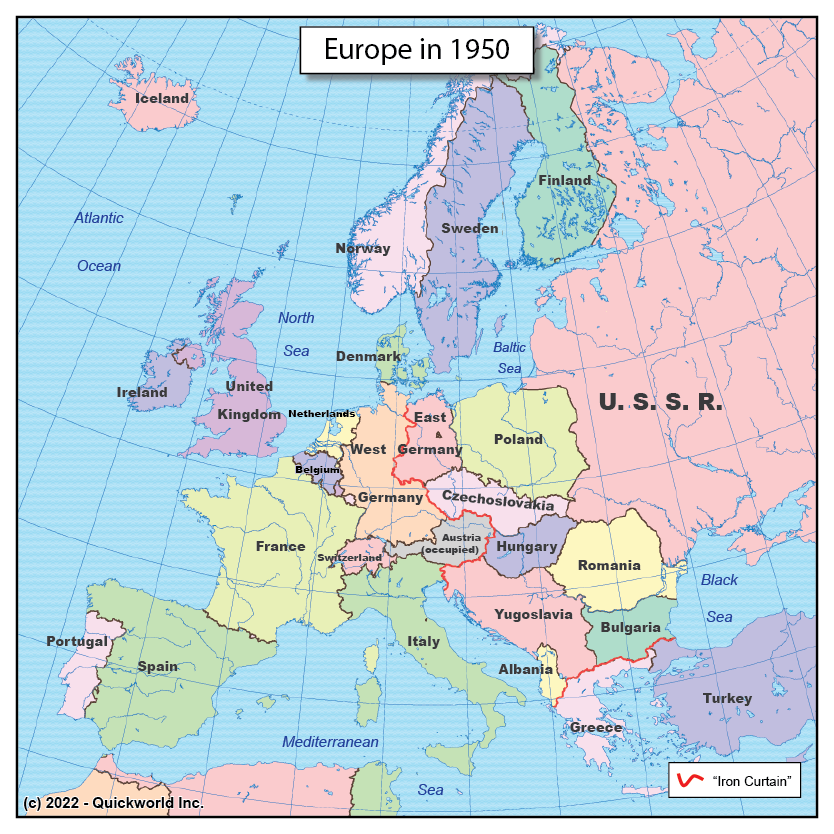Our Series on The World as it was focuses on Europe after the second World War.
The War modified European borders to a large extent and split Germany into two states. The dominant trait of the new European order, however, was the split into two blocks that had a very limited interactions: the Western Block, mostly aligned on the United States, was soon to start its own common institutions, the Coal and Steal European Community in 1951, followed by the European Economic Community in 1957.
In the East, the USSR tried to impose its economic order to the countries it had liberated from Nazism. The so-called People's Republics were six Eastern European Nations that were under direct influence of Moscow. The three Baltic republics of the interwar period had been integrated into the Soviet Union, while Finland maintained democratic institutions along with a strong economic integration with the Eastern Block.
In the South, communist Yugoslavia took distance with the USSR while Albania maintained strong ties until 1960, when it forged new ties with the People's Republic of China. Greece witnessed a brutal civil war from 1946 to 1949, with the communists losing to the royalists.
The last territories under international administration were Austria, which became a democratic country in 1955, and Berlin, which remained under quadri-partite administration until 1990 (USA, France, UK, USSR), although in reality, it was itself split between West-Berlin, a de facto enclave of West Germany, and East Berlin, which was integrated into East Germany.
Europe in 1950


